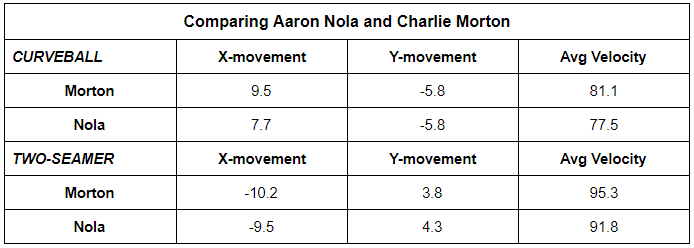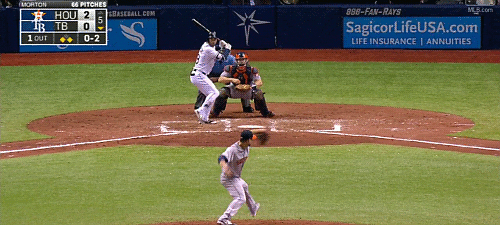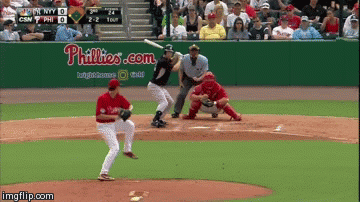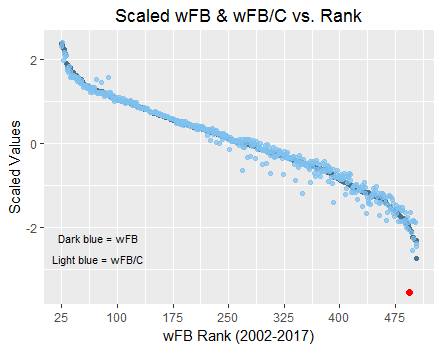What is SPV?
Have you ever heard about “SPV”? SPV: Spin rate Per Velocity (spin rate/ velocity)
This is a useful index to gauge the quality of a four-seam fastball. SPV came up in Japan’s All-Star Game this year and came to baseball fans’ attention.
Many people might think spin rate is the most important metric for measuring the quality of four-seam because we often hear TV commentators talking about it. In MLB, pitchers who throw with a high spin rate have attracted a lot of attention and respect since we started using tracking data from systems such as TrackMan and Rapsodo, but I have some questions about this focus on spin rate, however, and think that we should consider using SPV instead.
As you know, spin rate bears a proportionate relationship to ball speed. It’s hard to guess which factors more effectively into pitching stats, high ball speed or high spin rate. Because the ball speed is high when the spin rate is high. It’s not enough to explain pitching performance only from spin rate.
As a note, Driveline has also written about the metric we call SPV, except they refer to it as “Bauer Units”.
I agree with Driveline’s analysis and would like to present some new data to promote the effective use of SPV. I will also discuss some of the limitations of using SPV and the importance of knowing the direction of the spin axis of a pitch. In the end, I will mention the challenges of promoting the popular use of tracking data in our home market of Japan.
Let’s take a look Fig. 1 below. This graph shows the relationship of spin rate and ball speed, based on a data set from Baseball Savant covering 115,759 four-seam pitches in 2016. As the red line in the graph shows, spin rate is proportionate to ball speed.

Fig. 1 Relationship between spin rate and ball speed, distribution of high SPV and low SPV
When trying to judge the quality of a pitch such as a four-seam, you cannot look in isolation at either the spin rate or ball speed. Using the ratio of SPV makes it possible to compare pitches – for the speed thrown, did the ball have more or less spin (more or less hop) than average?
Effect of SPV on a batted ball
Table 1 and 2 below rank high and low SPV pitchers, respectively. Each of the pitchers threw over 1,000 four-seams in 2016. The data shows that, in general, high-SPV pitchers have a high FB% (fly ball%) and that low SPV pitchers have a high GB% (ground ball%).
Unfortunately, Koji Uehara is not in this ranking, because he didn’t throw over 1,000 four-seams last year. But it would be fun to take a look at his data, since we could know his interesting character from it. As you know, his ball speed is not so high, but his SPV is really high. We can make a good guess about his ball quality. Also, in other pitchers, we can know their character from this data.


I wrote in a paragraph above that spin rate is proportionate to ball speed. A spinning ball obtains lift and appears to break due to the Magnus effect, but this only occurs when the spin axis is tilted perpendicular to the line of ball travel, providing useful spin. In the case of a four-seam, the more the spin axis is tilted toward the horizontal, the more backspin there is, and the backspin creates lift force and apparent hop. If the spin axis tilts towards the direction of ball travel, the component of spin in that direction (gyro spin) does not contribute to ball movement.
A batter at the plate creates a mental image of the ball trajectory. There is an average trajectory for each pitch type, and the batter extrapolates the trajectory from pitching form. In general, balls which follow a familiar trajectory, or have an average SPV, are easier to hit than non-average pitches. For example, when a high-SPV pitcher throws a four-seam, the lift force obtained from useful spin is higher than average, causing the ball to hang in the air, or hop, more than the batter had expected. In other words, when a ball’s trajectory is higher than average, the batter tends to swing low and hit a fly ball.
On the other hand, when a low-SPV pitcher throws a four-seam, the ball is affected by less lift than average pitches, and therefore drops more than expected, leading to an increase in ground balls.
Limitations of SPV
SPV is useful and a great index to know the quality of a ball, but it also has a negative side. As discussed above and according to a study (Jinji T. and Sakurai S, 2006: Direction of Spin Axis and Spin Rate of the Pitched Baseball, Sports Biomechanics), the direction of the spin axis has a huge effect on ball break. For example, the spin of a perfect gyro ball (spin axis is parallel to the direction of travel) does not create lift, regardless of how high the spin rate is. Consequently, a four-seam with a lot of gyro spin does not appear to hop even if the SPV is high.
We also need to consider the direction of the spin axis in order to understand how much of the total spin contributes to the desired ball movement. Table 3 below shows angle of spin axis (the ball direction and the velocity vector of spin rate) for each skill level. This angle was measured by motion capture systems (VICON MX). As the player skill level rises, “α” generally increase, meaning that more of the total spin is backspin and therefore contributes to apparent ball movement. And there is a tolerance in “α” of professional pitchers. So when we gauge the quality of ball, we should care about the effect of spin axis for each player.

We understand that SPV is possible to judge four-seam quality, but some balls are impossible. We might need to see how each is changing toward horizontal direction or vertical direction to judge the pitched ball exactly. A convenient tracking device such Rapsodo is available to measure not only spin rate, but also spin axis. That would help us to know the quality of the ball.
Popularity of tracking data in Japan
Although baseball is very popular in Japan, most baseball fans are not interested in seeing live tracking data or hearing discussions about it when they are watching games. Just recently, in July of this year, a Japanese TV station tried to indicate SPV during a live game, but there was negative feedback from many fans. In the future, I hope Japanese baseball fans take an interest in tracking data and start discussing points, such as how many inches a ball breaks. I expect that the more Japanese fans get exposed to tracking data and become familiar with the concepts, the more they will enjoy it, especially metrics such as SPV.








